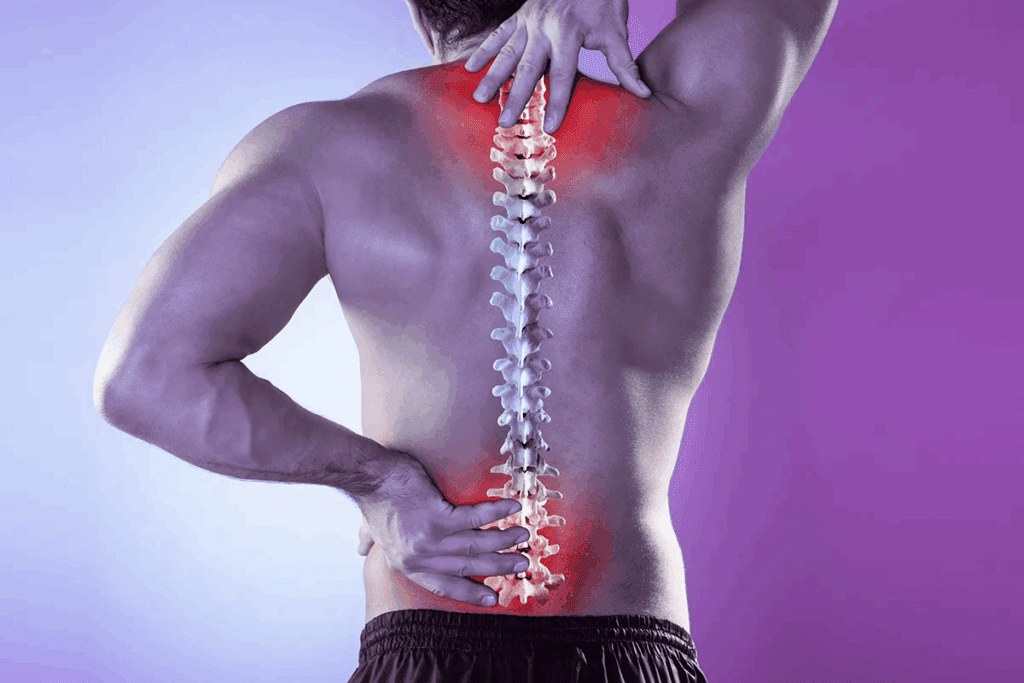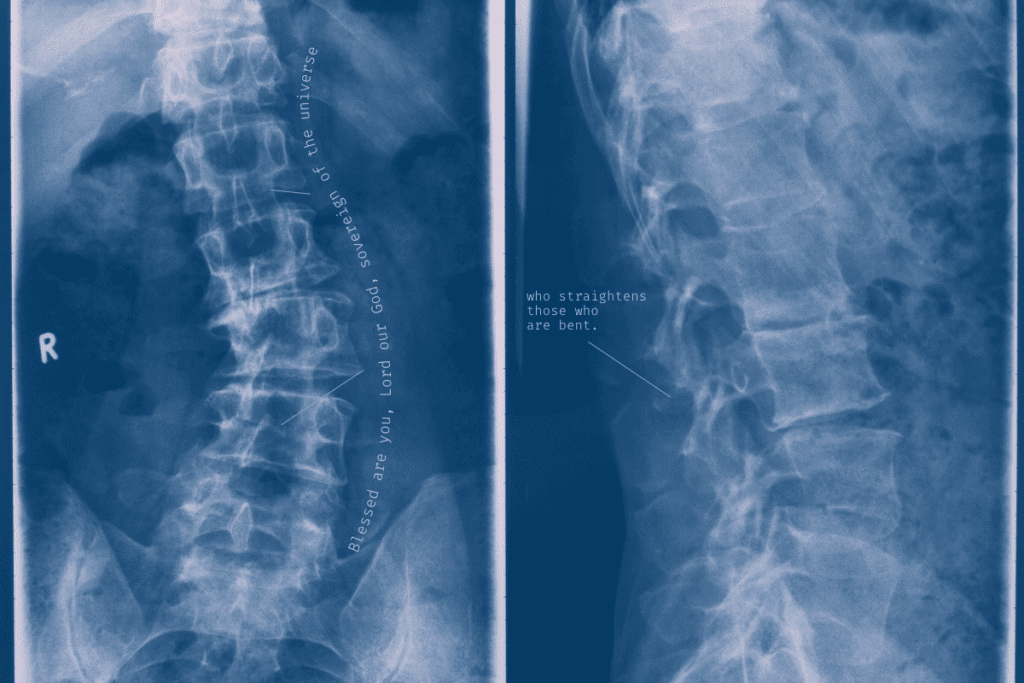Last Updated on November 24, 2025 by
Spinal cord anomalies are complex conditions that can greatly affect a person’s life. We will look at three key examples: spina bifida, split cord malformation, and sacral agenesis. Knowing about these conditions is vital for early detection and treatment.

At LIV Hospital, we aim to offer top-notch healthcare with full support for international patients. Spina bifida is a common congenital ailment, affecting thousands globally. Split cord malformation and sacral agenesis are also serious congenital ailments needing expert care.
It’s important to understand spinal cord anomalies to help those affected and their families. These issues can greatly affect someone’s life, requiring detailed medical care.
Developmental spinal disorders include spina bifida, congenital scoliosis, and vertebral anomalies. These are grouped based on when they start and how they show up. Knowing the type is key to finding the right treatment.
Spinal cord anomalies are not rare, with spina bifida being quite common. They are often found during pregnancy or after birth through scans. Finding them early is vital for good management. Studies show many cases of sacrococcygeal vertebral deformities are caught through advanced scans.

Spina bifida is a common birth defect of the spine. It happens when the spine and spinal cord don’t form right during pregnancy. We’ll look into this condition to understand it better.
Spina bifida has three main types: spina bifida occulta, meningocele, and myelomeningocele. Myelomeningocele is the most serious, where the spinal cord and its membranes bulge out. Knowing these types helps doctors diagnose and plan treatment.
Spina bifida’s occurrence varies worldwide, with some areas seeing more cases. In the U.S., it affects about 1,500 births each year. Taking folic acid during pregnancy can lower this risk, showing how important prenatal care is.

Spina bifida symptoms can vary, from mild skin issues to serious brain and nerve problems. Doctors use ultrasound and MRI to diagnose it. Finding it early helps plan better care for kids with this condition.
We treat spina bifida with a detailed plan, including surgery and ongoing care. The condition’s complexity, like spinal deformities types, needs a care plan that covers all bases.
Surgery is key for spina bifida, mainly when the spinal cord is exposed or tethered. The surgery’s timing depends on how severe the condition is and if there are complications like hydrocephalus. Early surgery can lessen some effects, like those from congenitally shortened pedicles, which affect spinal stability.
Long-term care is essential for spina bifida patients. A team of healthcare experts, like neurosurgeons and physical therapists, is involved.
Support from family and community is also key. It helps patients deal with the challenges of congenitally short pedicles and other spinal issues.
We look into split cord malformation, where the spinal cord splits. This rare birth defect is hard to diagnose and treat.
There are two main types of split cord malformation. Type I shows a double dural sac. Type II has a single dural sac. Knowing these types helps doctors manage the condition better.
Split cord malformation often goes with vertebral segmentation disorders. These can include vertebral anomalies like hemivertebrae. Spotting these connections is key for full care.
Imaging, like MRI, is key in spotting split cord malformation. Symptoms include nerve problems, back pain, and deformities. Getting the diagnosis right is vital for treatment.
Handling split cord malformation needs a team effort. It’s about understanding the condition’s complexity and its effect on life quality.
Managing split cord malformations requires a detailed plan. This includes surgery and watching the patient closely after. We know how complex this condition is and need a full treatment plan.
Surgery for split cord malformations needs careful planning and execution. Preoperative imaging is key to understanding the anatomy and planning the surgery. We look at the type of malformation, any other issues like congenital kyphosis, and the patient’s health.
After surgery, watching the patient closely is very important. We look out for any problems and make sure they recover well. Rehabilitation is also a big part of care, helping patients get the best results.
By taking a detailed approach to treating split cord malformations, we can help patients live better lives. Knowing about different spine disorders, like split cord malformations, helps us give better care.
Sacral agenesis is a rare birth defect where part or all of the sacrum is missing. It’s a type of spinal deformity that can greatly affect a person’s life. We’ll look at how it develops, how it’s classified, and its symptoms. We’ll also talk about how MRI helps diagnose it.
Sacral agenesis happens early in pregnancy, usually in the first few weeks. It’s often caused by genetics and the environment. Doctors use different ways to classify it to understand its severity and plan treatment.
Magnetic Resonance Imaging (MRI) is key in diagnosing sacral agenesis. It shows how much of the sacrum is missing and if there are other spinal problems. This information is vital for planning surgery.
People with sacral agenesis may have various symptoms. These include nerve problems, issues with bowel and bladder, and bone deformities. They might also have other birth defects like spinal problems or kidney issues. A thorough check-up is needed to handle these complex cases well.
It’s important to understand sacral agenesis to give the right care to those affected. By looking into its development, MRI findings, and symptoms, we can improve how we manage this condition.
Managing spinal cord anomalies needs a detailed plan. A team of experts works together to help those affected. They focus on the complex needs of each person.
Dealing with spinal cord anomalies, like spinal deformities types, is a team effort. Neurosurgeons, orthopedic specialists, and physical therapists are part of this team. They create a treatment plan that might include surgery, physical therapy, and support to improve life quality.
The future looks different for people with spinal cord anomalies, like examples of congenital anomaly spina bifida. It depends on how severe the condition is and the treatment’s success. It’s also important to manage related issues like lumbar syndrome to keep life quality high. Continuous support and care are key to helping these individuals reach their goals and live well.
We’ve looked at different spinal cord issues, like spina bifida congenital, congenital scoliosis, and vertebral anomalies. These problems can really affect how people live their lives. It’s important to understand them well to help manage them better.
Good care is key, including surgery, ongoing management, and support. This helps tackle the challenges of these spinal problems. With a team effort, we can make a big difference in the lives of those dealing with these issues.
Congenital scoliosis is a spinal deformity present at birth. It’s caused by abnormal vertebral development. We diagnose and treat it to prevent further curvature and complications.
There are several types, including congenital scoliosis, congenital kyphosis, and lumbar syndrome. Each type has its own characteristics and treatment methods.
Spina bifida is often diagnosed prenatally through ultrasound. After birth, it’s confirmed through physical exams and imaging tests like MRI or CT scans. These tools help us understand the condition’s severity and plan treatment.
Treatment for split cord malformation involves surgery. The goal is to untether the spinal cord and remove any bony or fibrous septa. We also provide post-operative care and long-term management for the best outcomes.
Sacral agenesis is a rare condition where the sacrum is partially or completely absent. We diagnose and manage it with a multidisciplinary approach. This includes addressing associated anomalies to improve quality of life.
We manage spinal cord anomalies with a detailed, multidisciplinary treatment plan. This includes surgery and long-term support. Our aim is to enhance quality of life and provide ongoing care for these complex conditions.
MRI is key in diagnosing sacrococcygeal vertebral deformities. It allows us to see the spinal cord and surrounding structures in detail. This helps us make an accurate diagnosis and treatment plan.
Yes, many congenital anomalies can be treated. We use a mix of surgical and non-surgical interventions. We work with patients and their families to create a personalized treatment plan that improves their quality of life.
Jasiewicz, B., & others. (2023). Caudal Regression Syndrome—A Narrative Review. Children, 10(12), Article 2572. https://pmc.ncbi.nlm.nih.gov/articles/PMC10047641/
Subscribe to our e-newsletter to stay informed about the latest innovations in the world of health and exclusive offers!